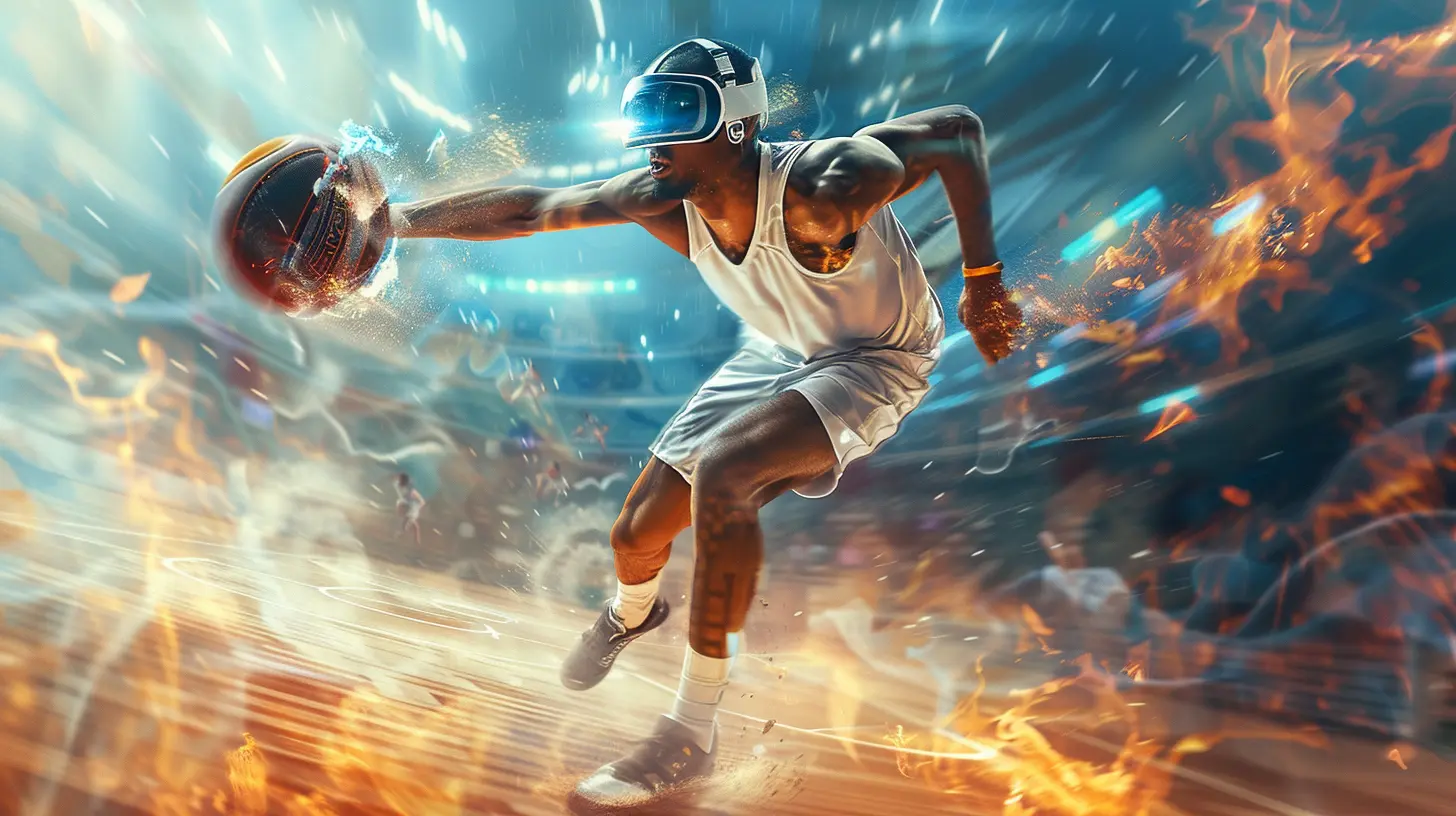The Physical Benefits of Playing Virtual Sports
19 October 2025
Let’s get real — when you think of sports, what comes to mind? Probably sweating it out on a basketball court or sprinting across a soccer field, right? But what if I told you there’s a new kind of sport that’s changing the game — literally? I’m talking about virtual sports.
Now, before you roll your eyes thinking it’s just another excuse to stay glued to screens, hear me out. Virtual sports aren’t just fun video games — many of them actually have real physical benefits. Yep, you can burn calories, tone muscles, and even improve your reflexes, all by stepping into the world of simulated sports.
In this article, we’re diving deep into how virtual sports stack up in the fitness department. Whether you're a couch potato looking to get moving or a gym-goer curious about mixing things up, this one's for you.
What Exactly Are Virtual Sports?
Let’s define it before we dissect it.Virtual sports are digital games or simulations based on real-world sports. They combine video game technology with physical movement, often using motion sensors, VR headsets, or augmented reality tools. Think about interactive fitness games like Ring Fit Adventure, Beat Saber, or VR boxing simulators. Even platforms like Wii Sports and Kinect paved the way for this hybrid of gaming and fitness.
But here's the twist — unlike traditional video games that only work your thumbs, virtual sports engage your entire body.
Burning Calories Like a Boss
Ever spent 30 minutes boxing in VR? If so, you’re probably aware of the serious sweat session it can turn into. According to several studies, active virtual sports can torch anywhere from 200 to 500+ calories an hour, depending on the intensity.Let’s compare:
| Activity | Avg Calories Burned (per hour) |
|-------------------------|---------------------------|
| Walking (3 mph) | ~250 |
| Virtual Boxing (VR) | ~400-600 |
| Playing Wii Tennis | ~300 |
| Jump Rope (moderate) | ~450 |
Surprised? Virtual sports can burn just as many — sometimes more — calories than standard exercise routines. The reason? You’re moving continuously without even realizing it because, well, it feels more like play than work.
Improving Cardiovascular Health
Your heart doesn’t care if you're jogging down a street or ducking punches in a VR boxing ring — as long as it’s pumping hard, it's getting stronger. Engaging in high-intensity virtual sports gets your heart rate up, improving blood flow, lung function, and overall endurance.Most cardio-based virtual games use full-body movement — from dancing games to VR sword fighting. If you’ve tried them before, you know the post-game panting is real. And just like regular cardio workouts, you're working your heart, lungs, and muscles all at once.
Enhancing Balance and Coordination
Here’s where things get fun. Virtual sports require you to move in 3D space, react to visual cues, and often perform precise movements. This forces your body and brain to work together — just like in real-world sports.Whether you’re:
- Dodging virtual punches
- Swinging a racket in VR tennis
- Balancing in a yoga simulation
…you’re training your motor skills, reflexes, and hand-eye coordination.
Over time, these improvements can translate into better performance in daily tasks and even reduce the risk of falls and injuries — especially for older adults.
Muscle Engagement and Toning
Think virtual sports are all cardio? Think again. Many of these games target specific muscle groups. From leg day to arm day, there’s (literally) a game for that.For example:
- VR boxing: Arms, shoulders, core
- Dance simulations: Legs, glutes, hips
- Fitness-based VR RPGs (Ring Fit): Quads, hamstrings, abs
You don’t need to hit the weights every time. These interactive sports create resistance and repetition, both of which are key ingredients for muscle toning.
And since gameplay often involves short bursts of movement, you're also getting the benefits of HIIT (High-Intensity Interval Training) without the treadmill torture.
Boosting Flexibility and Mobility
One of the underrated benefits of virtual sports? Improved flexibility.Yoga VR platforms guide users through stretches and poses that not only relax the muscles but improve joint mobility. And since you're guided by virtual instructors or in-game goals, it keeps you more engaged than a static at-home yoga video.
Regularly engaging in such games can help you:
- Increase your range of motion
- Reduce stiffness
- Relieve tension in joints
So yes, your body will thank you later.
Mental Engagement = Physical Consistency
Let’s be honest, one of the biggest challenges in fitness is sticking with it. The gym can feel repetitive. Jogging gets boring. But virtual sports? They’re inherently rewarding. You level up, unlock achievements, and chase high scores — all while working out.This mental stimulation leads to longer sessions, more consistency, and ultimately, better results. You're not just exercising — you're having fun, which makes it way easier to turn this into a habit.
Perfect for All Age Groups and Fitness Levels
Another awesome thing about virtual sports? Accessibility.Whether you’re a hyperactive teen, a busy office-goer, or a retiree looking for low-impact movement, there’s a virtual sport tailored to your needs. Many platforms let you choose the intensity level, length of session, and even track your progress.
This makes it an ideal way for people of all ages — and fitness levels — to stay active without risking injury or burnout.
Posture Perfect: Ergonomic Health Benefits
Often overlooked but totally worth mentioning is the impact virtual sports have on posture.A lot of these games require you to stand upright, move evenly from side to side, and stabilize your core. Compare that to slouching in front of a computer all day. By engaging in regular virtual gameplay, you're subtly training your body to stay upright, balanced, and aligned.
For those who work desk jobs, this could be the perfect antidote to chronic back stiffness and poor posture habits.
The Social Side: Movement Through Multiplayer
Another hidden gem? Multiplayer modes.Whether you're challenging your best friend to a virtual tennis match or dancing against someone halfway around the globe, these social interactions boost your motivation and keep you moving longer.
Some virtual sports communities are downright massive, offering leaderboards, challenges, and forums where players share workout tips and game strategies.
And let’s be real — sweating it out feels way less like a chore when you’re doing it with others (even digitally).
The Pandemic Push: A Fitness Revolution
Let’s not forget how much COVID-19 changed the fitness landscape.When gyms shut down, many of us turned to VR and motion-based games just to get off the couch. What started as a temporary fix has grown into a lifestyle shift for many. Virtual sports filled the gap — and then some — blending home-based convenience with real physical benefits.
Potential Drawbacks (And How to Fix Them)
Of course, no fitness trend is perfect. Virtual sports do have a few downsides:Screen Fatigue
Too much time in VR could strain your eyes or give you headaches. The fix? Take breaks. 10 minutes every hour can make a big difference.Limited Outdoor Exposure
You’re inside, no fresh air or sunlight. So mix in outdoor walks or sports to balance things out.Cost
VR setups and games can be pricey. But with new affordable consoles and smartphone-compatible gear, it’s more accessible than ever.Final Thoughts: Is It Worth It?
Let’s boil it down.Virtual sports may not completely replace traditional workouts, but they’re an incredible supplement — especially for folks who need a fun way to stay active. They're engaging, effective, and constantly evolving. Whether you're jumping into a virtual boxing match or dancing your heart out in a rhythm game, your body’s getting a serious workout.
So next time someone tells you video games are just for lazy days, go ahead and challenge them to a VR duel. Who says fitness can’t be fun?
all images in this post were generated using AI tools
Category:
Virtual SportsAuthor:

Ruben McCloud
Discussion
rate this article
1 comments
Giselle McMillen
Virtual sports enhance coordination, agility, and fitness levels, providing a unique way to improve physical health while having fun.
November 2, 2025 at 12:11 PM

Ruben McCloud
Thank you! I'm glad you recognize the benefits of virtual sports in promoting physical health while keeping the experience enjoyable.


